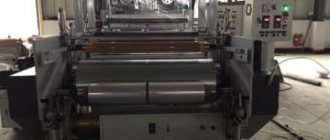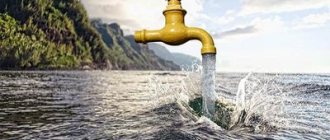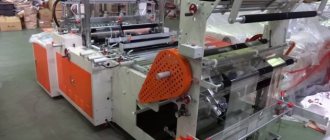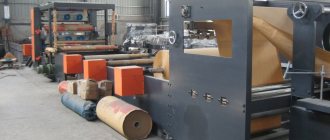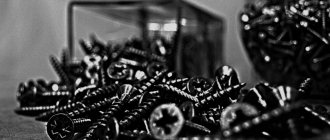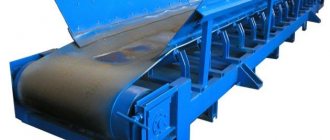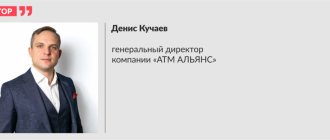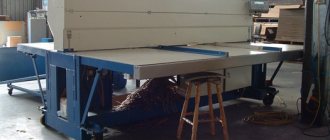The niche for the production of PET containers is still considered more or less free, although competition is growing every year. Starting the production of plastic bottles is becoming increasingly difficult. However, the demand for polymer containers is also growing - the number of manufacturers of drinks and other products that are bottled in them is also increasing. Nowadays you rarely see milk, low-alcohol drinks, beer and lemonade in glass containers. It has been replaced by the lightweight, unbreakable and cheap plastic bottle.
Brief analysis of the business: Costs of organizing a business: 500-600 thousand rubles Relevant for cities with a population: no restrictions Situation in the industry: the production sector is saturated Difficulty of organizing a business: 3/5 Payback: 6-9 months
Therefore, we can say that this business will be profitable and it makes sense to do it. This is one of the business ideas that can subsequently bring high and stable income .
Business plan
Any enterprise starts with a business plan. Without laying out the cost and profit figures in front of you, it is impossible to understand how profitable the business will be.
Investment calculation
The initial investment should cover the costs of purchasing equipment, raw materials, renting premises, paying staff and paying for electricity. It would not be superfluous to provide for the costs of repairing the premises and its arrangement, in particular, a bathroom, a warehouse for storing blanks and finished products, as well as a room for staff.
Demand analysis
This is one of the necessary conditions when opening any production. Is there a similar manufacturer in this city, how well does it satisfy the demand for plastic containers, what quality, design and purpose are the containers produced? The constantly growing demand for plastic containers is due to their advantages over similar glass containers. Pet bottles are unbreakable, easy to transport, and cheaper.
For producers of drinks - bottled water, juices, carbonated drinks, it makes sense to think about opening their own production of plastic bottles . This step can lead to a reduction in production costs by up to 20% by reducing the cost of packaging and its transportation from the manufacturer.
In addition, surplus products (plastic containers) can be sold, which will become a source of additional income.
The result of such an analysis will help you navigate the scale of production and, accordingly, determine the size of the initial investment.
Payback
If the consumer of the container - the food manufacturer - follows the rules for disposable use of PET containers, the demand for it will never fall.
The profitability of this business is high because the raw materials for it are quite cheap. In addition, equipment for the production of plastic bottles will begin to pay for itself even with a batch of a thousand pieces.
Due to the fact that plastic bottles do not require boxes for transportation, and they weigh much less than glass, transportation costs are significantly reduced.
If there is a need to change the shape, color or size of the container, this can be done at minimal cost by simply changing the mold.
According to experts, the return on production is 100%, and the payback period for investments is about 6 months. The initial capital for opening a mini-factory for the production of PET bottles (with medium-capacity equipment) can be no more than 500-600 thousand rubles.
Opening a mini-factory
In order to open a mini-factory, you need premises, equipment and personnel who will work on it.
Premises and staff
The following requirements are imposed on the premises (for a small production size):
- minimum area 30 sq. m;
- concrete or tiled floor;
- non-flammable wall material;
- ceiling not lower than 4 m:
- availability of ventilation, water-carrying networks and power supply.
With a small production volume, 3 people are enough to service the equipment.
Cost of equipment
The amount of initial capital depends on the capacity of the equipment purchased for the production of plastic bottles, as well as on its manufacturer. Russian or Chinese equipment for PET bottles with a capacity of 700 pcs. per hour will cost very little. Its approximate cost will be:
| bottle blowing machine | from 47,000 rubles |
| preform oven | from 6000 rubles |
| Press form | from 27,000 rubles |
| compressor | from 12,000 rubles |
The cost of equipment from well-known European brands will range from 200 to 600 thousand euros, but machines with a productivity of 24 thousand pieces per hour will cost 1.5 million euros. Such production capacities are justified only for very large enterprises producing drinks - lemonade, beer, dairy products or in production of household chemicals.
The cost of equipment for the production of PET bottles may also depend on the individual characteristics specific to this particular equipment. These are energy consumption, power, number of heating zones and pressure when blowing the bottle.
Business ideas that may be interesting:
- Production of stretch film
- Recycling plastic bottles
- Production of disposable plastic tableware
- Production of shoe covers
Selecting a room
The enterprise for the production of plastic products belongs to chemical production, so the premises must meet high standards. The workshop must meet each of the following requirements:
- The workshop area must be at least 45 square meters.
- Acceptable ceiling height is from 4 meters.
- Concrete floors and walls must be made of fireproof material.
- Location outside the city is one of the prerequisites for obtaining permission from local authorities.
- Availability of an emergency power supply and good wiring that can withstand a power of 30-50 kW.
- Good warning system with smoke sensors and detection of foreign substances in the air. It is desirable that the workshop be equipped with forced ventilation with wide shafts.
- There must be an emergency exit.
- If production involves the constant presence of workers, there must be a good heating system.
- The premises must have an uninterrupted source of water supply.
- Climate control in the workshop.
For convenience, it is worth dividing the room into two zones: working (at least 30 square meters) and for testing plastic bottles. Placing a workshop next to the production of bottled drinks will save up to 20% of production costs.
Production stages
Manufacturing technology can be single-phase or two-phase.
- With single-phase technology, the production of the mold and the blowing of the bottle occur on one machine.
- With two-phase technology, these stages are performed on different devices.
If you do not plan to produce large batches of bottles, you can opt for single-phase equipment. For larger-scale production, two-phase technology is more suitable.
To use two-phase technology, the required preform will be more compact, which is much more convenient for its transportation and storage as a raw material.
Raw materials
The raw material for the production of plastic bottles is a preform made from the feedstock - PET (granulated polyethylene terephthalate). Preform is a thermoplastic obtained by heating polyethylene terephthalate granules. It does not deform or break when reheated.
The preform is a blank with a fully formed neck. Subsequently, it is from this that the plastic bottle is blown.
Preform making equipment has nothing in common with bottle making equipment. Therefore, as a rule, their manufacturers do not make preforms themselves, but purchase them as raw materials. Thus, two manufacturers are connected in the technological chain.
Beverage manufacturers are doing the same, having also opened lines for the production of PET containers. They prefer to purchase preforms rather than install the entire container production cycle at their own enterprise.
When choosing a supplier of preforms, you must definitely find out what raw materials they are made from. If this is recycled plastic raw material, in other words, waste, then such preforms cannot be used for the manufacture of food containers, but only for technical liquids.
Preforms
Preforms are:
- universal;
- shortened;
- thick-walled.
Each type produces bottles of different colors and shapes.
Production methods
The classic technology for manufacturing plastic bottles is based on molding the product by internal inflation. This two-step process includes:
- Preform casting on an injection molding machine. PET granules are heated until plasticized and the resulting viscous composition is filled into stainless steel matrices under high pressure. At this stage, the neck and technological transport ring are formed, located slightly below the thread;
- Blowing out the bottles. The preform is heated in an oven until softened, and then air is supplied inside the preform - the bottle inflates and takes on its final shape. The neck is intensively cooled to avoid deformation.
Thanks to the presence of two stages, suppliers of equipment for the production of PET bottles have the opportunity to combine process line configurations. Accordingly, an enterprise can use:
- Single phase process. In this configuration, the injection molding machine and the blow molding machine are included in one production chain - it is enough to load PET granules into the machine to ultimately obtain finished products;
- Two-phase process. In this case, the finished preform after casting is sent to a warehouse or manually moved to the receiving hopper of a blow molding machine. This solution is more flexible, since storing the workpiece, which takes up 12–20 times less space than the final product, is much easier and cheaper. In addition, several different products can be obtained from one preform, and in a single-phase process such a change in the assortment entails a complete reconfiguration of the entire line.
It should be noted that the raw materials used for the production of plastic bottles can also be secondary - defective or used bottles are crushed in crushers and sent to the hopper of an injection molding machine. Preforms made from recycled materials are much cheaper, but they cannot be used in the manufacture of food containers or for blowing thin-walled products with complex patterns.
Technological process
In the oven, uniform heating of the preform is ensured by its rotation while moving through the oven tunnel. It should be borne in mind that PET is a hygroscopic material, so before molding it into a bottle, excess moisture should be removed.
The preform is heated in an oven, after which it is placed in a mold, inserting a steel rod into the neck of the workpiece, through which air will be supplied under pressure. It must be uniform so that the final product - a plastic bottle - does not deform. To do this, the blowing time should be minimal, this is the only way the melt will disperse evenly along the walls of the mold.
When choosing a compressor, it is advisable to provide a protection function against overheating of the neck. On the preform it is fully formed and already threaded. It is important that it is not damaged during blowing, otherwise the product will be rejected.
The resulting bottle must be cooled. This is done using air or liquid carbon dioxide.
For stability, the bottom is made concave with the formation of a convexity in its central part.
The final part of production is control. The product is checked for leakage, which may result from defects in the finished product. After inspection, the bottles are sorted. Planned defects can account for up to 25% of manufactured products. Then the unusable container is sent back for recycling.
Some production features
One of the costly items in production is the high consumption of electricity. With an equipment capacity of 3000 bottles per hour, 25 kW is consumed.
If PET containers will be used mainly in the food industry, especially for bottling a perishable product (for example, milk), it is necessary to comply with hygienic requirements for it. This requires the installation of high-quality filters that prevent oil impurities from entering the bottle blowing chamber.
The cost of production directly depends on the preform, or more precisely on its mass. The raw material from which a plastic bottle with a capacity of 1 liter and weighing 35 g is produced is considered to be of high quality.
When choosing equipment for the production of plastic bottles, there is another factor to consider. This is the volume of packaging that is planned to be made. There are machines for the production of containers with capacities from 200 g to 5 liters. It is impossible to make cylinders for a cooler with them. That is, you also need to be guided by the purpose and volume of the containers being manufactured.
PET bottles can be produced in different colors and shapes, which will allow beverage manufacturers to make their product recognizable and more attractive to customers.
Another advantage of plastic containers is the possibility of their recycling.
How much money do you need to start a business producing plastic bottles?
To get started, you need at least half a million rubles to get started. The number of staff is selected individually, but sometimes two or three people are enough. Usually one per machine. The amount of equipment purchased must justify all supply and demand in the sales market. But if you start production, then all the costs at the initial stage will pay off in the next six months to a year.
Few people know that the equipment used requires a lot of electricity costs. Therefore, you should be prepared for large bills. If plastic bottles are used for products with a short shelf life, then it is worth paying special attention to the hygienic requirements for the equipment.
Depending on the weight of the preform, there may be costs in manufacturing technology. A product of high quality is considered if the weight of a liter bottle is less than 35 grams. The volume of your orders and production income as a whole will depend on this.
Sales risks
Risk exists in any business, and the production of plastic bottles is no exception. Independent manufacturers need to understand that they can achieve payback with a stable production of 500 thousand containers per month. Therefore, seasonal cooperation with temporarily opening beer outlets is not profitable.
It would not be very interesting to open such an enterprise in very small cities and towns, where there are no large enough manufacturers of liquids for which plastic containers are used.
There is also no point in transporting containers over long distances - it will cost the buyer too much due to high transport costs. It is better to look for a sales market at short distances.
It is also necessary to take into account seasonality in the demand for plastic bottles. In the summer months it will be significantly higher, as beverage manufacturers work at full capacity during this time.
All these factors affecting production prospects must be taken into account when analyzing demand at the stage of drawing up a business plan.
Business ideas that may be of interest:
- Production of plastic bags –
Features of doing business
When developing a project and planning expenses, it is worth considering some nuances:
- this production is energy-intensive, for example, on a line that produces 3000 units per hour, it “burns” about 25 kW per hour;
- when packaging drinks with a short shelf life (for example, dairy products), the hygienic side is important - equipping with powerful filters that will prevent the ingress of various substances during the inflation process;
- An important feature of production is the weight of the preform, which determines the cost of the finished container (bottles from preform weighing up to 35 grams are produced using professional equipment).
Business prospects
Today in Russia the demand for polymer packaging is growing by an average of 8% per year. They are used not only by food manufacturers. Household chemicals are poured into plastic containers; they are used by manufacturers of motor oils and other car care products. In short, it is simply impossible to produce plastic bottles beyond the growing demand. Therefore, this business can only grow and develop.
Today in Russia the demand for polymer packaging is growing by an average of 8% per year. They are used not only by food manufacturers. Household chemicals are poured into plastic containers; they are used by manufacturers of motor oils and other car care products. In short, it is simply impossible to produce plastic bottles beyond the growing demand. Therefore, this business can only grow and develop.
Financial investments
A business plan consists of initial expenses (including the costs of legal registration of the enterprise) and monthly investments (workshop rent, salaries, etc.).
| Purpose of expenses | Amount (in rubles) |
| Enterprise registration | 13 000 |
| Workshop rental fee (1 month) | 35 000 |
| Marketing campaign | 50 000 |
| Purchase of PET blanks | 1 500 000 |
| Staff salary (starting salary) | 125 000 |
| Purchasing a working line | 750 000 |
| Total | 2 473 000 |
This is the approximate starting capital that you need to have if you are planning to open a workshop for the production of plastic bottles. It is also worth considering monthly expenses:
| Purpose of expenses | Amount (in rubles) |
| Workshop rental | 35 000 |
| Staff salaries | 90 000 |
| Purchase of PET blanks | 1 500 000 |
| Marketing promotions | 20 000 |
| Total | 1 645 000 |
From the second table you can see that the salary line indicates a smaller amount. This is explained by the fact that the initial investment takes into account the costs of labor for general workers, which are indispensable when installing the equipment.
